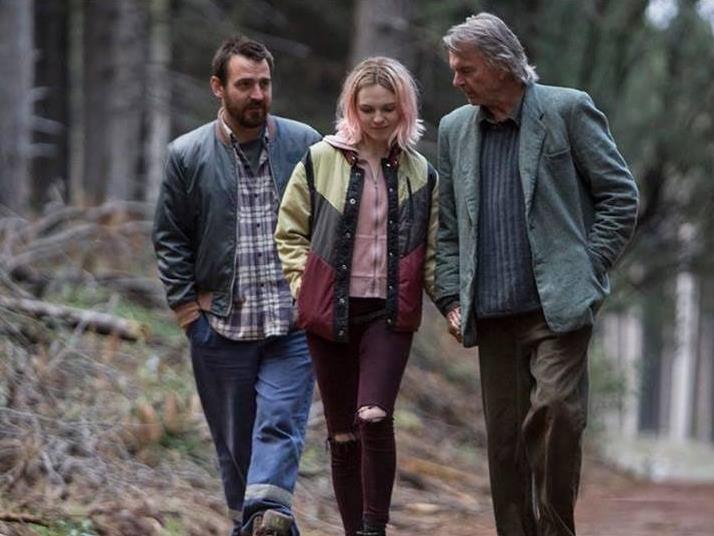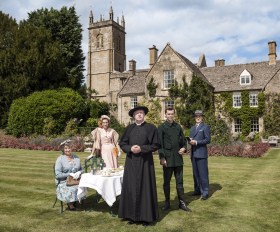Image: www.screen.nsw.gov.au
Produced by Jan Chapman (The Piano, Bright Star) and Nicole O’Donohue (The Last Impresario), The Daughter is translated from Belvoir’s The Wild Duck, a 2011 stage production written by Simon Stone with Chris Ryan, and inspired by Henrik Ibsen’s 1884 stage play.
Christian (Paul Schneider) returns to be the best man at the new marriage of his widowed father Henry (Geoffrey Rush) to 31-year-old housekeeper, Anna (Anna Torv).
Set in an archetypal logging town, the wedding coincides with the closure of Henry’s sawmill. The story fragments around the staging of the wedding – the mill’s wrecking an incipient reminder of the outer structure of decay and inherent moment of reckoning, and a father who seems to have relinquished his son to the world.
Interlaced with the son’s return is the world of teenager, Hedvig (in an unfathomable performance by Odessa Young). Introduced at her school’s science fair with her mother, Charlotte (Miranda Otto) and father, the now ex-saw mill employee Oliver (Ewan Leslie), the coming-of-age narrative follows Hedvig (the title-character) as she explores her sexuality, gender and the psychological skin of her family.
It is in the film’s visual primacy that Stone and cinematographer Andrew Commis allow the narrative – and characters – to unfold. The film’s naturalism, crisp editing and sparse dialogue, with Mark Bradshaw’s original music score is used deftly throughout, presents a film that is stripped back. It’s symbolism, a paean to Ibsen, is finely balanced with the characters’ psychological modulations and defies narrative expectations. Hedvig’s burgeoning, yet complicated sexual relationship with Adam (Wilson Moore) in their attempts to sexually commune, is no more expressive in the abandoned mill shed than the natural forest.
Stone doesn’t labour over narrative exposition. Ironically, the absence of on-screen information – and the confident restraint of Commis’ camera – propels the narrative. The opening low angle image of Henry in the Mill’s office is countered by the off-screen voices of outraged sacked workers. The bottom having fallen out of logging consumption speaks of Henry’s deeper psychological problems. But the formal device of unmatched visuals and vocalization used throughout the film is not distancing. The awareness of characters’ voices out-of-step with their on-screen visuals falls away in the face of dramatic intensity and the internal psychological reality that unfolds.
Bearing the title The Daughter, the film is also about fathers; the legitimacy of what it is to be called a father, to become a father, and the often-insular identity it entails. Part of the power of Stone’s direction and writing is that he takes scenes beyond the conventional climax and trappings of civility. Stone’s challenging cinematic formalism, while it will be touted as a European sensibility, is one very much his own. The Daughter is a powerful first feature.
Rating: 4 stars out of 5
The Daughter
Produced by Jan Chapman and Nicole O’Donohue.
Directed and written by Simon Stone, inspired by Henrik Ibsen’s The Wild Duck
Camera: Andrew Commis
Editor: Veronika Jenet
Music: Mark Bradshaw
Production designer: Steven Jones-Evans
Art director, Maxine Dennett
Costume designer, Margot Wilson
Sound: Nick Emond
Sound designer: Liam Egan
Cast: Geoffrey Rush, Sam Neill, Ewen Leslie, Paul Schneider, Anna Torv, Miranda Otto, Odessa Young.
Actors:
Director:
Format:
Country:
Release:





